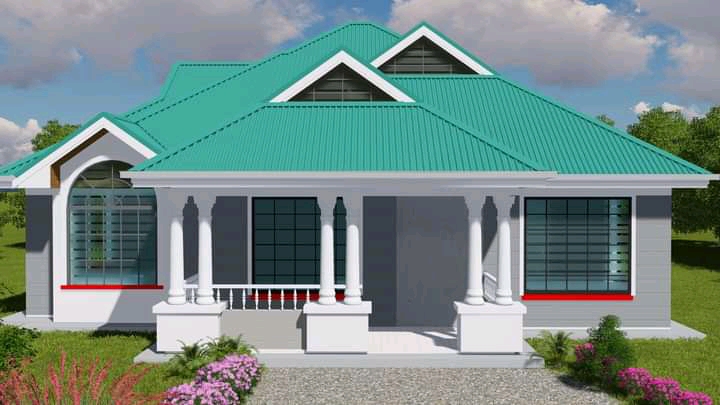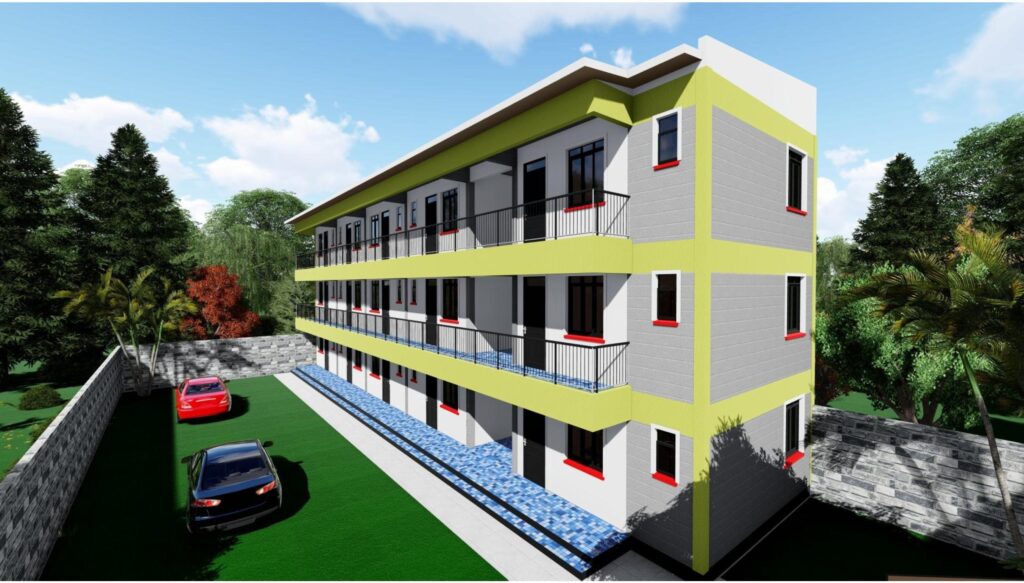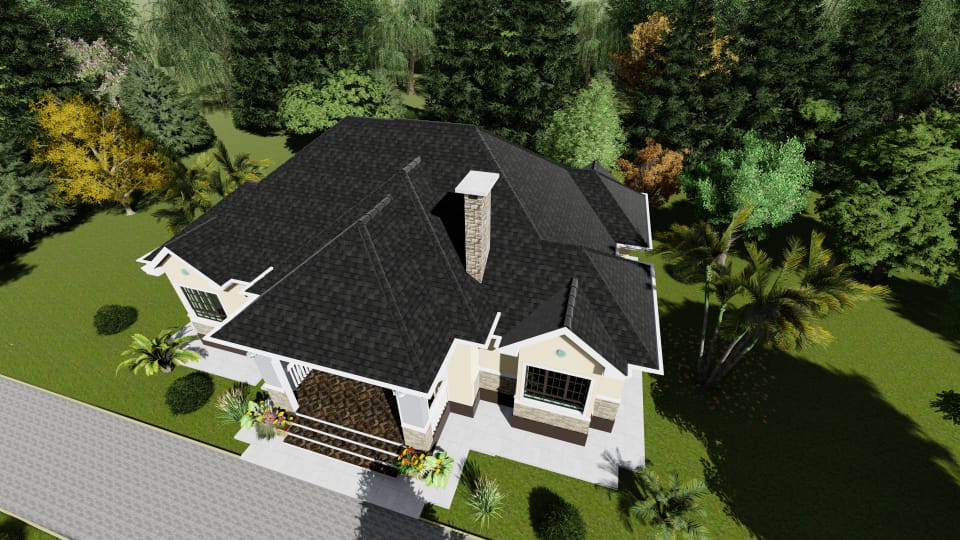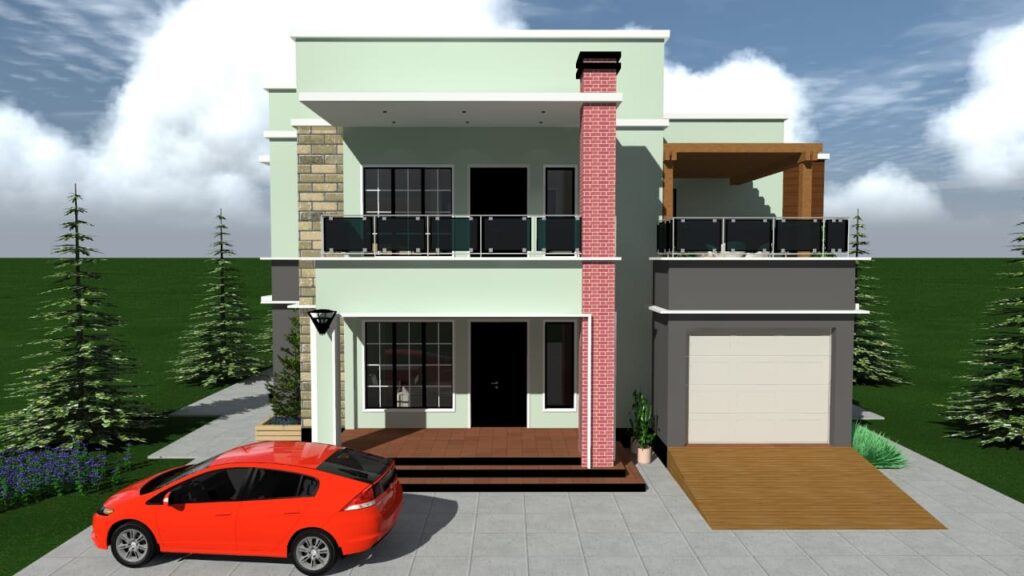Explore minimalist house designs in Kenya, featuring modern bungalows, sustainable materials, and cost-effective plans. Discover top floor plans, estimated construction costs, and expert tips for building your dream minimalist home.
Introduction to Minimalist Living in Kenya
Minimalist House Designs in Kenya
Minimalist house designs in Kenya are increasingly popular because they combine style, functionality, and affordability. By focusing on simplicity and efficiency, these homes maximise space and reduce unnecessary construction costs.
In urban and rural settings, minimalist designs provide an ideal balance of modern aesthetics and practical living. They also promote sustainable lifestyles that are increasingly valued in Kenya.

Understanding Minimalist Design Principles
Minimalist design emphasises simplicity, clean lines, and functional spaces. Rooms are uncluttered and furniture is purposeful, which creates a calm, organised environment. This principle helps homeowners focus on essentials, making daily life more efficient.
Popularity of Minimalist Homes in Kenya
The popularity of minimalist homes in Kenya has grown due to urbanisation, high land costs, and the desire for affordable housing. Cities like Nairobi, Mombasa, and Kisumu have limited plots, making efficient layouts crucial. Minimalist homes make optimal use of small spaces without compromising comfort or style.

Benefits of Minimalist Living in the Kenyan Context
Minimalist homes reduce construction costs, lower energy bills, and are easy to maintain. They integrate well with the natural environment, providing a serene and sustainable living space. Many homeowners also find these homes visually appealing due to their modern and clean design.
Key Features of Minimalist House Designs
Minimalist house designs in Kenya combine style, efficiency, and sustainability. They emphasise clean spaces, functional layouts, and practical use of materials.
Simplicity and Functionality
Minimalist homes remove non-essential elements, leaving only functional components. Each room serves a specific purpose, which reduces clutter and creates an organised living environment. This approach ensures comfort and practicality in everyday life.
Open Floor Plans and Natural Lighting
Open layouts promote airflow and allow natural light to illuminate the home. This creates a feeling of spaciousness, reduces energy consumption, and enhances the overall living experience. Open plans are especially useful in smaller urban plots.
Use of Sustainable Materials
Sustainable materials like bamboo, reclaimed wood, and stone are popular in minimalist homes. They are eco-friendly, durable, and provide a modern aesthetic while lowering environmental impact.

Integration with the Environment
Minimalist designs often include outdoor living spaces such as patios, small gardens, or courtyards. These features encourage a seamless connection between indoor and outdoor environments and make the home feel larger.
Energy Efficiency and Cost Savings
Features like solar panels, rainwater harvesting, and passive cooling systems reduce energy costs. These homes are designed for efficiency, helping homeowners save money while contributing to environmental conservation.
Popular Minimalist House Styles in Kenya
Kenya offers diverse minimalist house styles to cater to various family sizes and plot dimensions. Each style maintains clean lines and functional layouts.
Single-Story Bungalows
Single-story bungalows are ideal for small families or couples. They offer easy access to all rooms, efficient use of space, and a modern appearance that fits urban and suburban plots.
Flat-Roof Maisonettes
Maisonettes are two-story minimalist homes that maximise vertical space. These designs are ideal for urban plots where land is limited but families need more living space.
Modern Duplexes
Duplexes provide two separate living spaces, perfect for larger families or multi-generational households. They maintain minimalist aesthetics while offering practical flexibility.
Contemporary Rural Homes
Rural minimalist homes often blend with the surrounding environment using natural materials. These designs are spacious and sustainable, offering a serene living experience away from city noise.
Urban Minimalist Apartments
Urban apartments use smart layouts to maximise space. Features like multifunctional furniture and compact storage make them perfect for city dwellers.
Top Minimalist House Plans in Kenya
Selecting the right house plan is essential for creating a functional and comfortable minimalist home. Kenyan architects provide a variety of plans tailored to plot sizes and family needs.
2-Bedroom Minimalist Bungalow
These bungalows are compact yet highly functional. They typically feature a living room, two bedrooms, one bathroom, and an open kitchen area. This layout is perfect for couples or small families seeking affordability.
3-Bedroom Flat-Roof House
Three-bedroom designs provide additional space for families. They often include a living room, dining area, kitchen, and bedrooms with built-in storage. A flat roof can allow for a rooftop terrace or garden.
4-Bedroom Modern Bungalow
Larger families benefit from four-bedroom bungalows that provide multiple bathrooms and ample living space. These homes combine functionality with minimalist elegance.

Compact Urban Homes
These designs maximize limited urban plots by using vertical space and multifunctional furniture. They offer practical solutions for city dwellers without compromising on style.
Customisable Plans for Narrow Plots
Many architects offer plans tailored to narrow plots. These Customisable designs retain minimalist principles while optimizing space and functionality Links: Affordable Minimalist House Plans Kenya, Customisable House Plans for Narrow Plots Kenya
Estimated Construction Costs and Budgeting
Construction costs for minimalist homes vary based on size, design, and materials. However, these homes are generally more affordable than traditional designs.
Cost Breakdown for Different Designs
- 2-bedroom bungalow: KSh 1.5M–2.5M
- 3-bedroom maisonette: KSh 3M–5M
Custom designs: Costs vary based on customisations and materials used
Financing Options Available in Kenya
Construction loans, developer financing, and personal savings are common methods. Choosing the right financing plan depends on project size, location, and personal budget.
Tips for Cost-Effective Construction
Use local materials, limit non-essential features, and hire experienced builders. Planning ahead helps avoid unexpected expenses during construction.
Understanding Local Building Regulations and Permits
Obtain all required permits before starting construction. Compliance with local regulations ensures legal protection and prevents delays.
Choosing the Right Plot for Your Minimalist Home
Choosing the right plot is essential to ensure that your minimalist home functions efficiently and looks visually appealing. Factors such as location, size, and terrain impact the design and construction process.
Factors to Consider When Selecting Land
Consider proximity to work, schools, healthcare facilities, and essential amenities. A well-located plot not only improves convenience but also increases long-term property value.
Optimal Plot Sizes for Minimalist Designs
Plots around 30×60 feet are common for minimalist houses in Kenya. This size allows for a comfortable house footprint, outdoor spaces, and parking without wasting land.
Urban vs. Rural Location Considerations
Urban plots provide accessibility to services but may limit outdoor space. Rural plots offer larger land and privacy but may require longer commutes. Choose based on lifestyle needs and family priorities.

Impact of Terrain and Climate on Design Choices
Hilly or uneven terrain may increase foundation costs, while flat land is easier and cheaper to build on. Consider climate factors such as sun exposure and wind patterns when positioning your house.
Collaborating with Architects and Builders
Working with experienced architects and builders ensures your minimalist home is safe, functional, and visually appealing. Proper collaboration reduces construction errors and delays.
Finding Experienced Professionals in Kenya
Seek architects and builders with portfolios of minimalist projects. Personal recommendations and online reviews can help identify reliable professionals.
Importance of Clear Communication and Planning
Discuss your budget, timeline, and design preferences before construction begins. Clear communication prevents misunderstandings that can lead to delays or extra costs.
Legal Requirements and Building Permits
Obtain all necessary permits from local authorities before starting construction. Compliance with legal requirements avoids fines and ensures a smooth building process.
Ensuring Compliance with Local Building Codes
Work with professionals familiar with Kenyan building codes. This ensures safety, structural integrity, and adherence to regulations.
Interior and Exterior Design Tips
Minimalist homes require careful interior and exterior design to create a cohesive, functional, and visually appealing space.
Use multifunctional furniture, open shelving, and a neutral color palette to maximize space. Minimal decoration enhances the sense of openness and calm.
Incorporate natural materials such as stone, wood, or concrete for a modern look. Patios and small gardens complement the minimalist aesthetic and improve outdoor living.
Landscaping for Minimalist Homes
Choose low-maintenance plants, stone pathways, and simple water features. Minimalist landscaping reduces upkeep while enhancing curb appeal and environmental harmony.
Sustainable Material Options
Opt for bamboo, recycled timber, energy-efficient glass, and other eco-friendly materials. Sustainable choices reduce environmental impact and can lower long-term costs.

Construction Challenges and How to Overcome Them
Building a minimalist home in Kenya may present challenges, but careful planning can minimise risks and costs.
Budget Constraints
Prioritise essential features and select cost-effective materials. Sticking to your budget ensures the project is completed without compromising quality.
Regulatory Hurdles
Stay informed about local building codes and zoning regulations. Early compliance prevents delays, fines, and project interruptions.
Supply Chain Delays
Order materials early and plan procurement to avoid delays. Delays in materials can increase costs and extend timelines unnecessarily.
Managing Contractors and Timelines
Set clear expectations with contractors through contracts and regular communication. Proper management ensures timely completion and quality workmanship.
Cost Breakdown for Building a Minimalist House in Kenya
Building a minimalist house in Kenya requires thoughtful financial planning. The total cost depends on factors such as size, materials, and design complexity. Most homeowners spend less than on traditional builds because minimalist homes emphasize functionality over excess. Local materials like concrete blocks, mabati roofing, and bamboo can cut expenses significantly. Labour costs vary by region but tend to be cheaper outside Nairobi and Mombasa. Minimalist projects also save money on finishes and furnishings since the design avoids clutter. Proper budgeting helps ensure you achieve simplicity without sacrificing durability or aesthetics.
Cost of Materials and Labour
Material costs for minimalist homes range between KSh 25,000 and 40,000 per square meter. This includes cement, steel, timber, roofing, and finishes that are often simple but high-quality. Labour accounts for around 30–40% of total costs, depending on the contractor’s expertise. Opting for prefabricated walls or panels can further lower labour expenses. The minimalist approach avoids costly details like elaborate ceilings or excessive cabinetry. This means you spend less without compromising design appeal. To stay within budget, work with a quantity surveyor to monitor spending. Transparent cost tracking ensures a smooth and efficient project.
Smart Budgeting Tips for Minimalist Construction
When budgeting, start by identifying your must-have spaces — for instance, a living area, kitchen, bedroom, and bathroom. Avoid unnecessary rooms to save both material and labour costs. Use modular or multipurpose furniture to reduce interior expenses. It’s also wise to choose durable, low-maintenance materials to minimise future repairs. Consulting local architects can help balance your design vision with cost efficiency. Remember to allocate a contingency fund for price fluctuations. The key is to plan ahead and prioritise simplicity in both structure and spending. Proper financial foresight guarantees long-term affordability and satisfaction.
Financing Options for Minimalist Home Builders
In Kenya, homeowners can access financing through bank loans, SACCOs, or microfinance institutions. SACCOs often offer lower interest rates for members compared to commercial banks. For eco-conscious builds, some lenders provide green housing loans. Alternatively, consider building in phases, starting with core spaces before expanding. A transparent financial plan attracts lenders’ confidence and helps avoid delays. Government initiatives supporting affordable housing can also reduce costs. Combining savings with structured loans ensures manageable repayment timelines. Thoughtful financing enables more Kenyans to own minimalist homes without overwhelming debt.
Minimalist Bungalow Designs Popular in Kenya
Minimalist bungalows are increasingly popular due to their single-level convenience and aesthetic appeal. These homes blend modern elegance with practical living, making them ideal for both urban and rural plots. Their layouts emphasise open spaces, large windows, and seamless indoor-outdoor flow. In Kenya, many prefer them for easier maintenance and accessibility for all ages. With fewer structural complexities, they are also faster to build. The minimalist style complements Kenya’s warm climate by encouraging natural ventilation. These homes prove that beauty and simplicity can coexist harmoniously in modern living.
Open-Plan Layouts for Kenyan Lifestyles
Open-plan living combines the kitchen, dining, and living areas into one fluid space. This design fosters family interaction and allows for versatile furniture arrangements. Natural light flows freely, reducing dependency on artificial lighting during the day. In Kenya, it’s particularly useful in homes where space is limited. It also enhances ventilation, making interiors cooler and more comfortable. Minimalist bungalows often incorporate sliding glass doors to connect indoor and outdoor areas. This creates a sense of spaciousness without increasing the building’s footprint. The design’s flexibility adapts well to diverse family needs.
Energy Efficiency in Minimalist Bungalows
Energy efficiency remains a top priority in modern Kenyan architecture. Bungalows with minimalist design can integrate solar panels for electricity and water heating. Light-coloured roofing materials help reflect heat, keeping interiors cool. Proper insulation and shading reduce air-conditioning costs. Large windows and open courtyards maximise airflow and daylight. Using LED lighting and water-saving fixtures further improves sustainability. The goal is to create homes that consume fewer resources but deliver high comfort. Over time, these energy-efficient features translate into major cost savings for homeowners.
Minimalist Interior Design Ideas for Kenyan Homes
Minimalist interiors combine aesthetics with functionality. The goal is to create serene, clutter-free environments that promote relaxation and focus. In Kenya, this design trend resonates with homeowners seeking peace amidst busy lifestyles. The use of earthy tones, natural light, and simple textures enhances calmness. Furniture selection focuses on practicality and comfort over decoration. Spaces feel open and breathable, reflecting both elegance and efficiency. Such interiors suit homes of all sizes, from compact apartments to luxury bungalows.
Colour Palettes and Materials
Minimalist homes often use neutral shades like white, beige, grey, and light brown. These colours reflect light and create a sense of spaciousness. Natural materials such as wood, stone, and bamboo bring warmth and authenticity. Simple textures like linen and matte finishes add visual depth without distraction. In Kenya, locally sourced materials reduce costs and environmental impact. Avoid excessive decoration — instead, let quality finishes stand out. Minimalism thrives on the principle of “less is more.” The right combination of tones and materials transforms simplicity into sophistication.
Furniture and Lighting Choices
Furniture should be sleek, functional, and proportionate to room size. Multi-purpose pieces like sofa beds or foldable tables save space efficiently. For lighting, mix ambient, task, and accent sources to enhance atmosphere. Pendant lights or recessed fixtures maintain a clean ceiling line. In Kenya, incorporating handcrafted furniture adds cultural charm. Prioritise quality over quantity — one statement piece per room is often enough. Lighting also helps emphasise textures and architectural features. Balanced illumination makes minimalist spaces inviting yet uncluttered.
Landscaping Ideas for Minimalist Homes in Kenya
Outdoor spaces play a huge role in minimalist design. Landscaping aims to extend the home’s simplicity into nature. Kenyan homeowners prefer low-maintenance gardens with native plants and natural stones. Walkways, terraces, and patios are designed for both beauty and function. Open lawns or gravel sections keep outdoor areas clean and organised. Water features like small ponds or fountains add tranquillity without complexity. A minimalist landscape enhances the home’s architecture and provides a peaceful retreat.
Use of Native Plants and Simple Layouts
Choosing indigenous plants like aloe vera, bougainvillaea, and lantana minimises maintenance costs. These species thrive in Kenya’s varying climates and require less watering. Simple garden layouts focus on symmetry and clean lines. Avoid overcrowding plants — leave open ground for visual balance. Gravel or stone paths create defined walkways while complementing natural tones. Raised planters made from recycled concrete add eco-friendly appeal. The goal is to achieve harmony between structure and nature. Minimalist gardens celebrate simplicity through careful design rather than excess.
Outdoor Living Spaces and Furniture
Minimalist homes often feature outdoor lounges or dining patios. These spaces blend seamlessly with indoor areas through large glass doors. Furniture pieces are usually made from wood, rattan, or metal for durability. Neutral cushions and minimal accessories keep the look clean and modern. In Kenya, shaded pergolas or verandas offer protection from the sun while maintaining openness. Solar lighting adds warmth and energy efficiency to evening settings. Creating outdoor rooms encourages relaxation and social connection. Simplicity outdoors reinforces the minimalist lifestyle.
Smart Technology in Minimalist Kenyan Homes
Technology complements the minimalist lifestyle by enhancing convenience and efficiency. Smart systems reduce clutter by integrating multiple functions into one control hub. In Kenya, homeowners are adopting automation to improve comfort and security. Voice-controlled lighting, smart thermostats, and automated irrigation are becoming common. These systems can be managed remotely via mobile apps. While initial setup costs are higher, long-term energy savings make them worthwhile. Smart homes embody modern simplicity — effortless living powered by innovation.
Home Automation for Comfort and Security
Smart home systems let you control lights, doors, and appliances using your smartphone. Motion sensors can automatically adjust lighting levels to conserve energy. Video doorbells and cameras improve safety while blending into minimalist décor. In Kenya, affordable systems like Tuya or Alexa-based devices are widely available. Integration with solar systems further boosts sustainability. Automated systems reduce daily tasks, saving time and effort. The minimalist goal is not just less stuff — it’s also less stress. Technology achieves that balance perfectly.
Conclusion
Minimalist house designs in Kenya offer affordable, stylish, and sustainable living solutions. They optimise space, reduce costs, and promote eco-friendly lifestyles.
By carefully planning your plot, working with experienced professionals, and selecting suitable materials, you can create a home that meets your needs while embracing modern minimalist principles. Whether building a bungalow, maisonette, or compact urban home, minimalist designs provide long-term value and comfort.





